On the way back from Matera to the Adriatic coast is
Alberobello, a town that features numerous inhabited
trulli. The
trullo type of stone house was constructed without mortar or concrete, due to the taxes laid on these materials, and could be easily torn down if the powers that be didn't want anyone building any houses without their permission.
Trulli were often constructed in agricultural fields as temporary homes for workers, who would inhabit one for a period of time before moving on to another worksite, and thus to a different
trullo. A typical
trullo was a single circular building with a conical roof. From the inside, the roof would resemble a Greek beehive tomb. In Alberobello, houses (and business establishments such as stores and restaurants) often include several
trullo units.
Today, you can rent a modern
trullo. For information, go
here,
here and
here.
Here's a street in Alberobello, with
trulli on both sides:
Here's a house made of at least two
trullo units:
A
trullo with an arched doorway:
Two
trulli, with several others behind them:
From an overlook, a whole bunch of
trulli:
And finally, a church behind some
trulli:
To the uninformed, the name Alberobello appears to mean "beautiful tree", but it does not. While
albero is Italian for "tree",
bello in this case does not mean "beautiful", but is instead derived from the Latin word
bellum, meaning "war". The name thus means "tree of war" or maybe "forest of war". For more on Alberobello and its
trulli, go
here and
here.



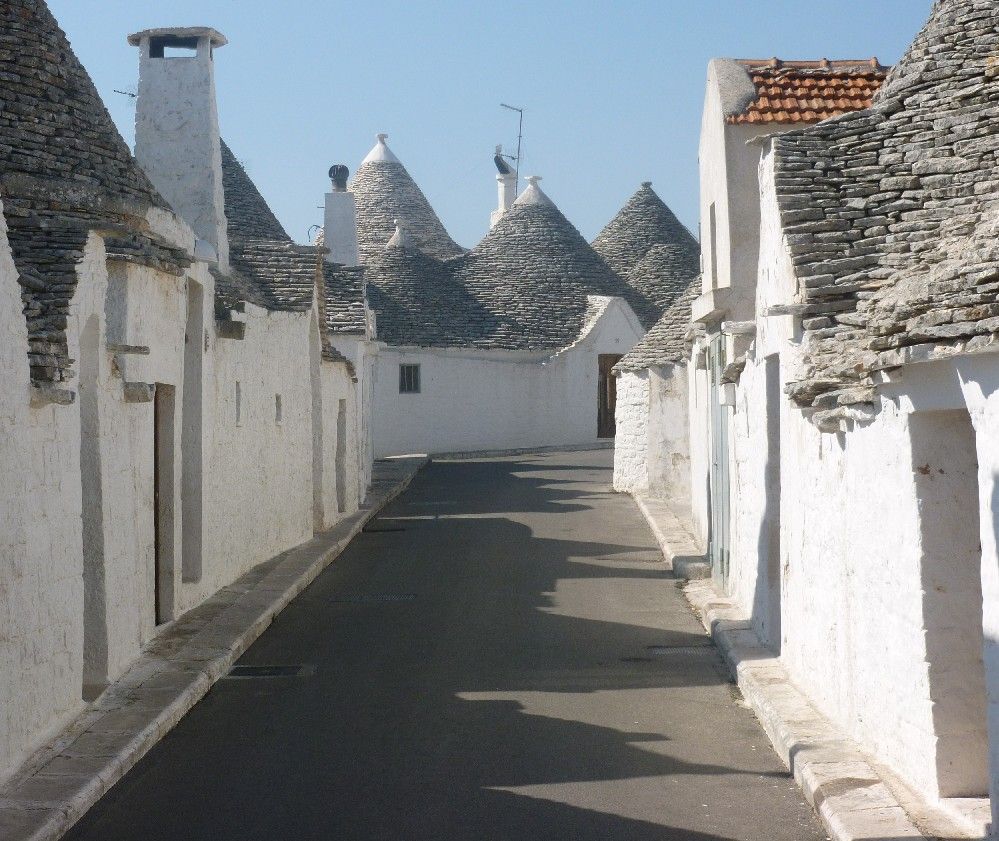
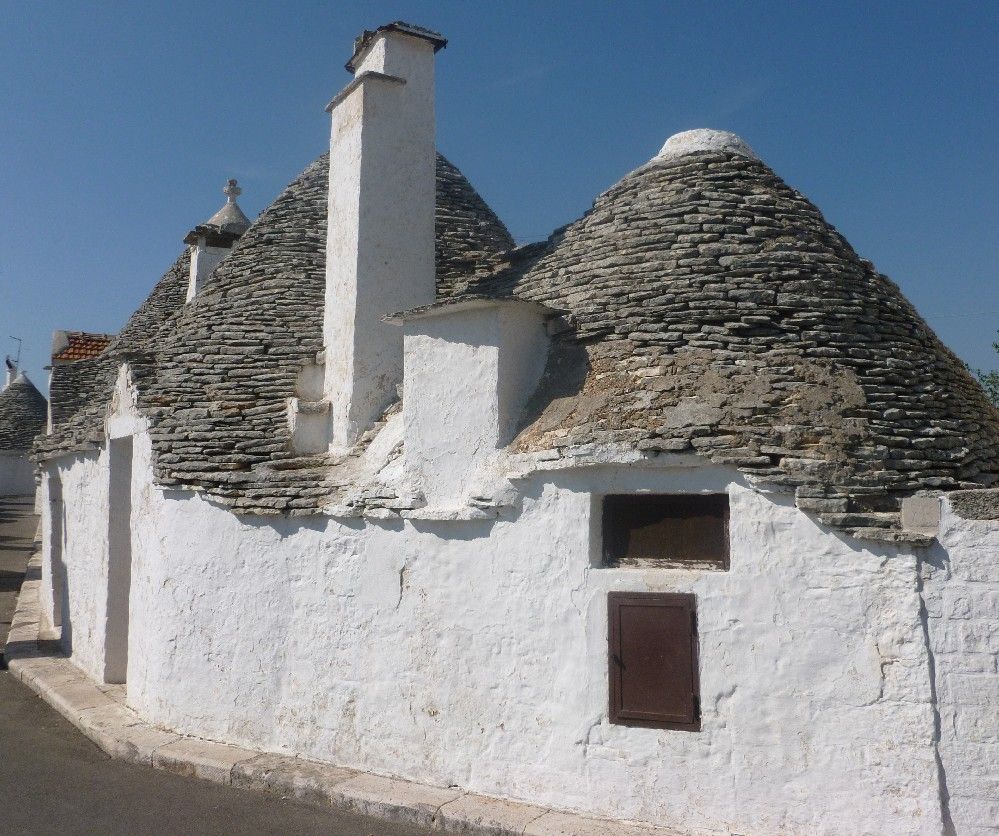

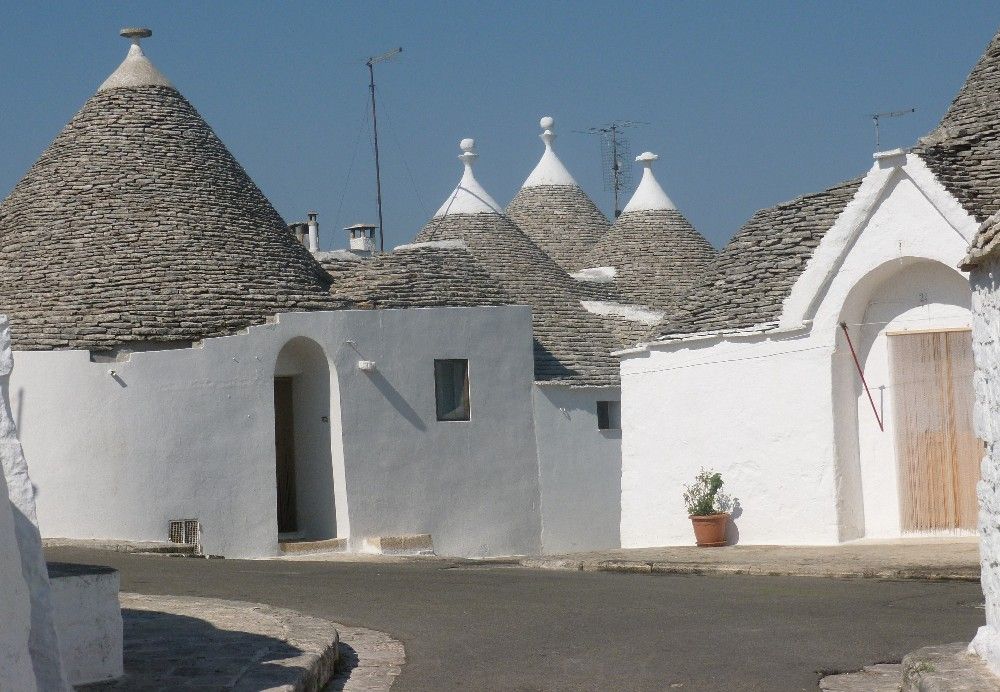
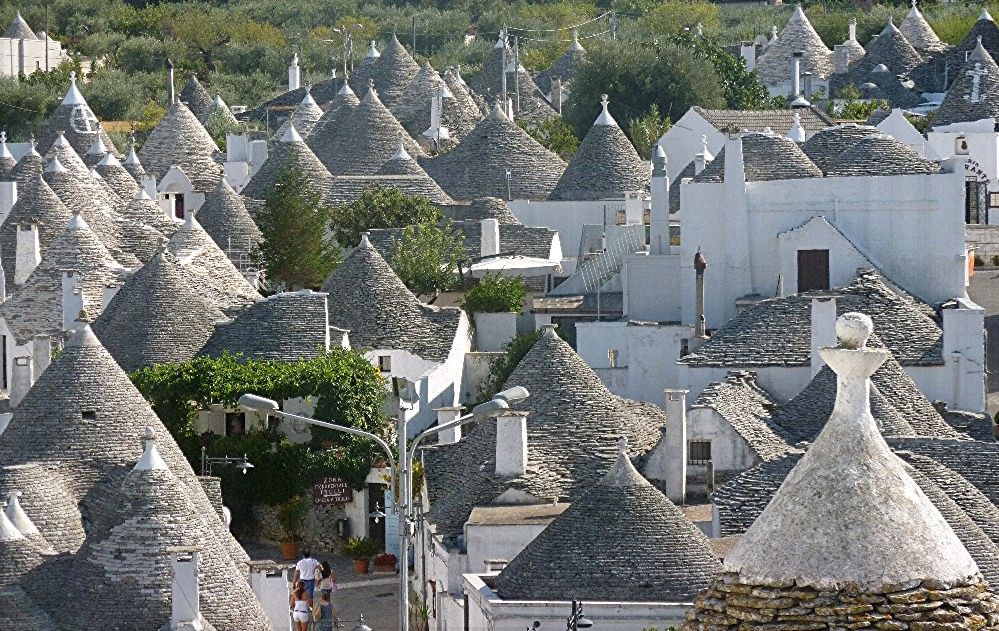
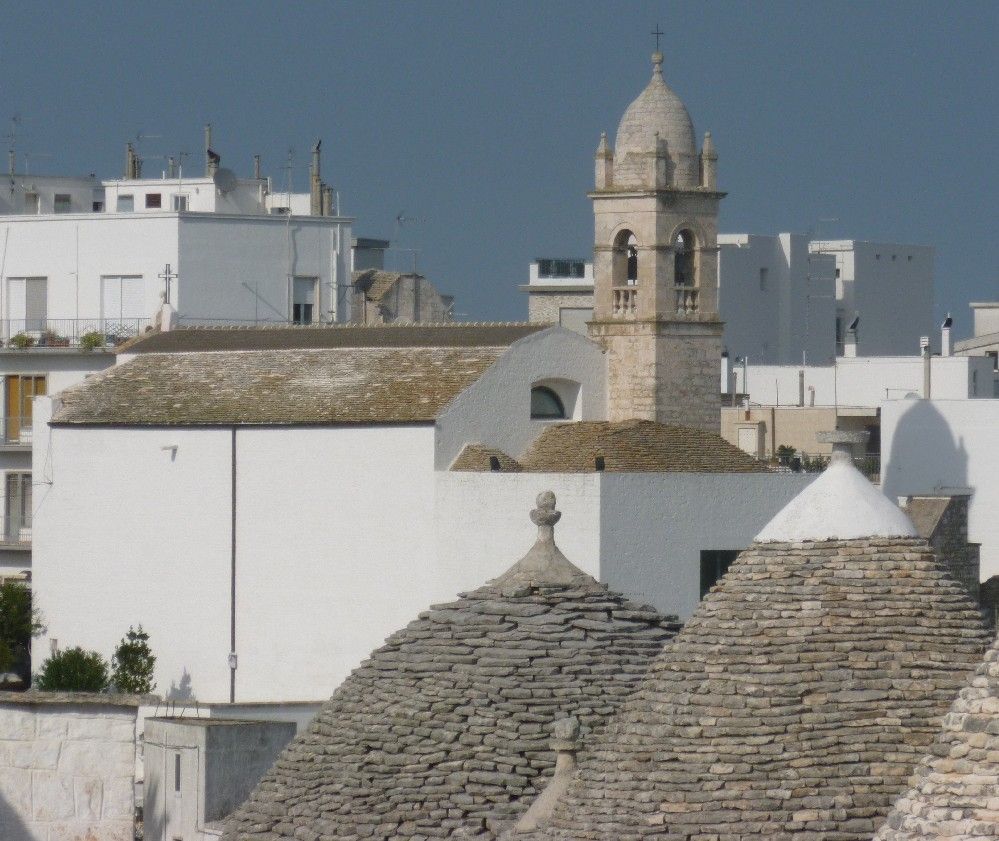
0 comments:
Post a Comment